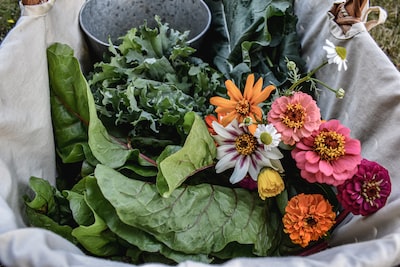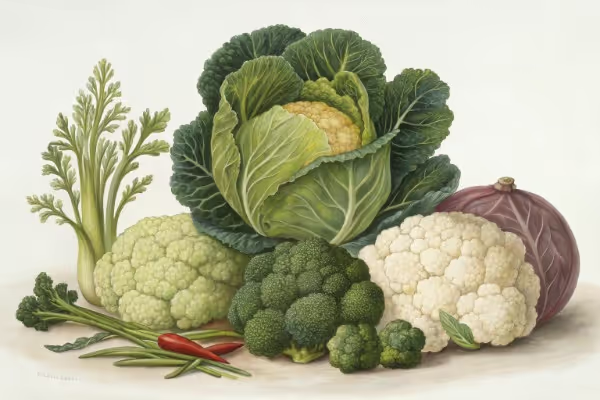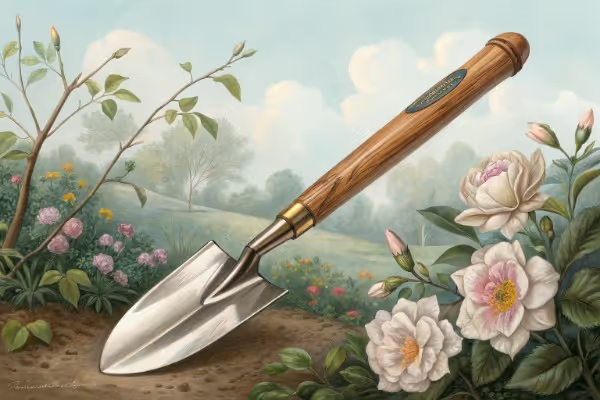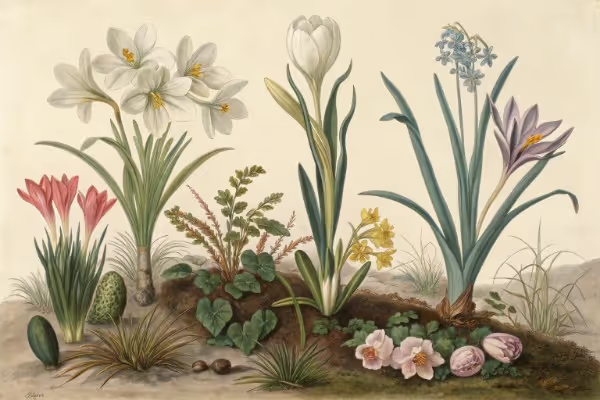What to Plant in June for a Healthy, Productive Summer Garden

What to plant in June
Wondering what to plant in June? Slip tomatoes, peppers, and zucchini into warm June soil to savor thriving summer harvests. Basil and marigolds sown now ward off pests and flourish in sunny beds. Here’s how smart planting choices ignite your garden's flavor and color all season long.
Cheatsheet: June Planting for Maximum Summer Yields
🌱 Warm-Season Vegetables
- Beans (bush & pole): Direct sow, harvest in 45-60 days.
- Summer squash: Zucchini, yellow, patty pan—reliable, nutrient-rich.
- Cucumbers: Pickling or slicing types thrive in 70–90°F (21–32°C).
- Corn: Fast-growing, needs full sun, water deeply.
- Okra: Loves heat, boosts vitamin C intake.
- Melons: Cantaloupe, watermelon—60–95°F (16–35°C) for sweet fruit.
- Eggplant & peppers: Transplant seedlings for best results.
🥬 Quick-Growing Greens
- Swiss chard: Heat-tolerant, cut-and-come-again harvests.
- Malabar spinach: Climbing, thrives as temps rise.
- Amaranth: Edible leaves, iron-packed, cooks like spinach.
🌸 Annual Herbs & Flowers
- Basil: Antioxidant-rich, pest deterrent near tomatoes.
- Dill & cilantro: Direct sow every 2–3 weeks for fresh harvests.
- Calendula, nasturtium: Edible blooms, attract pollinators.
🥕 Root Crops for Late Summer
- Carrots: Sow where soil stays below 85°F (29°C).
- Beets: Add minerals, use greens & roots.
- Daikon radish: Breaks up soil, grows fast.
🧑🌾 Tools and Products You'll Need
- High-quality seeds & starts
- Organic compost
- Mulch (straw, leaves)
- Soaker hose or drip line
- Floating row covers (protect from insects)
- Hand trowel & hoe
- Watering can or hose
- Sharp garden scissors
- Gloves
🌞 Planting Steps
- Remove spring crops and weeds; loosen soil 6–8 in (15–20cm) deep.
- Add 2–3 in (5–7cm) organic compost; mix into soil.
- Sow seeds or transplant starts at proper depth (see packet).
- Mulch heavily to retain moisture and suppress weeds.
- Water early morning; keep soil moist, not soggy.
- Thin seedlings for airflow and bigger harvests.
- Harvest early and often to encourage more yields.
🍅 Fast Facts
- Salad greens sown in June can be picked in 25 days.
- Pollinator plants can boost crop yields by up to 30%.
- Mulching cuts watering needs by up to half.
What to plant in June for a healthy, productive summer garden
I treat June like a green-light month: warm soils, long days, quick payoffs.
Before I plant, I confirm local frost data and soil temperatures, then I load the beds with crops that love heat and sprint to harvest.
Transplant now: heat lovers that pay you back fast
- Tomatoes: Choose early or midseason types at 55 to 75 days, and look for disease packages like VFN or TSWV to cut losses.
- My move: Set deep, strip lower leaves, pinch the first blossom cluster for one week, then feed lightly as fruits set.
- Peppers: They want nights above 60 F 16 C and steady moisture to prevent blossom end rot and aborted flowers.
- Mulch peppers and use stakes or small cages to keep fruit off hot soil.
- Eggplant: If flea beetles chew lace, I use lightweight row cover until flowering, then switch to yellow sticky cards and reflective mulch.
- Sweet potatoes: Plant sturdy slips on low ridges, 12 inches 30 cm apart, and let vines shade soil to save water.
- Basil: Transplant often for a continuous patch, and favor downy mildew resistant lines like Prospera DMR or Devotion.
Direct sow now: quick wins from warm soil
- Bush and pole beans: Soil at 60 F 16 C or warmer means fast germination, and inoculant boosts nodulation on new beds.
- I resow every 10 to 14 days until about 8 weeks before first frost for a steady pod parade.
- Cucumbers: Trellis slicers and picklers, or try parthenocarpic greenhouse types if pollinators lag.
- Keep soil at 70 to 95 F 21 to 35 C for spry germination, then water evenly to avoid bitterness.
- Summer squash and zucchini: Plant two waves in June to outrun vine borers and powdery mildew; pick at 6 to 8 inches 15 to 20 cm for top texture.
- Corn: Sow in blocks for pollination, side-dress nitrogen at knee high, and isolate supersweets from other types to protect flavor.
- Melons: Short-season cantaloupe and small watermelons thrive on black plastic or a hot bed; prune to a few fruits per vine in cool zones.
- Okra: Warm-region star; sow when soil is hot and pick pods under 4 inches 10 cm for tender gumbo fuel.
- Cut flowers: Zinnias, marigolds, cosmos, sunflowers pull in beneficials and feed vases while vegetables catch up.
Salads in the heat that do not quit
For lettuce in June, I switch to bolt-tough romaines like Jericho, Muir, or Salvius, and run 30 to 40 percent shade cloth in the afternoon.
For truly hot days, I lean on Malabar spinach Basella alba, New Zealand spinach Tetragonia, purslane, and amaranth greens for a crunchy, mineral-rich bowl.
Zone-by-zone cues for What to plant in June
- Zones 3 to 5: Focus on transplants and the quickest varieties; use row cover, low tunnels, or black mulch to stack heat units.
- Zones 6 to 7: Full menu is open; melons and late corn are fine if you pick early maturing cultivars.
- Zones 8 to 10: Heat pros: cowpeas, yardlong beans, okra, sweet potatoes, and tropical greens; pivot away from spring brassicas.
- Maritime/coastal: Ventilate tightly and pick powdery mildew resistant squash and zinnias; extra spacing buys airflow.
Soil temperature cheat sheet for June sowing
- Beans: 60 to 85 F 16 to 29 C
- Cucumbers: 70 to 95 F 21 to 35 C
- Corn: 60 to 95 F 16 to 35 C
- Summer squash: 70 to 95 F 21 to 35 C
- Melons: 70 to 95 F 21 to 35 C
- Basil: 70 to 90 F 21 to 32 C
- Okra: 75 to 95 F 24 to 35 C
These ranges align with vegetable germination charts from land-grant universities and the RHS.
Succession plan: a two-month June sprint
- Week 1: Transplant tomatoes, peppers, eggplant; direct sow beans, cucumbers, squash, and a row of zinnias.
- Week 2: Install trellis, mulch 2 inches 5 cm, and start weekly scouting for cucumber beetles and aphids.
- Week 3: Resow beans and cucumbers; tuck in a flat of basil between tomatoes for shade and fragrance.
- Week 4: Sow fast lettuces under shade cloth; side-dress corn; pinch basil again for branching.
- Weeks 5 to 8: Repeat beans and salad greens, plant a second wave of squash, and top-dress heavy feeders with compost.
Water, mulch, and nutrition that keep June plantings humming
I aim for deep watering every 3 to 4 days in hot spells, then adjust by checking soil 10 cm down with my fingers.
"Most vegetables need about 1 inch 25 mm of water per week, from rainfall or irrigation." — University of Minnesota Extension
Mulch with straw, leaves, or fine wood chips to hold moisture, buffer heat, and stop soil splash that spreads disease.
"Mulches help retain soil moisture and suppress weeds." — Royal Horticultural Society
Feed light and regular once fruit sets: a 3-1-2 ratio works for containers, while beds like compost plus a side-dress of calcium nitrate for corn and sulfate of potash for fruiting crops.
Pests and diseases that spike in June, and how I blunt them
- Squash vine borer: Cover young plants until bloom, wrap lower stems with aluminum foil, and plant a second wave for insurance.
- Cucumber beetles: Row cover until flowering, yellow traps at canopy height, kaolin clay film on leaves, and weekly sanitation of overripe fruit.
- Tomato early blight and septoria: Prune to one or two leaders, remove lower leaves, mulch, and rotate; copper or biofungicides only as needed.
- Aphids and mites: Hard water spray on undersides, insecticidal soap in the evening, and keep plants hydrated to resist flare-ups.
- Blossom end rot: It tracks with watering swings, not a simple calcium shortage; keep soil evenly moist and avoid excess nitrogen.
Containers and tight spaces
Five to ten gallon 19 to 38 L pots grow cherry tomatoes, peppers, cucumbers, and eggplant if you feed weekly and water daily in heat.
I use a light potting mix with 20 to 30 percent compost, fabric pots for airflow, and compact cultivars like Patio Choice Yellow tomato, Bush Pickle cucumber, and Snackabelle Red pepper.
Top 15 picks: What to plant in June if you want speed and flavor
- Bush beans: Provider, Jade, and Contender for quick, reliable pods.
- Pole beans: Kentucky Wonder and Fortex for long, tender picks and vertical yield.
- Cucumbers: Marketmore 76 slicer, Boston Pickling, and parthenocarpic Corinto in protected spots.
- Summer squash: Dunja and Success PM for powdery mildew resistance and steady fruit.
- Zucchini: Costata Romanesco for nutty flavor and firm texture at small size.
- Sweet corn: Early Sunglow or Sugar Buns for fast ears; isolate supersweets like Honey Select.
- Cantaloupe: Minnesota Midget or Halona in cooler zones; plant on heat-holding mulch.
- Watermelon: Sugar Baby or Blacktail Mountain for shorter seasons and sweet flesh.
- Tomatoes: Early Girl, Defiant PhR, or Sun Gold for fast color and strong disease packages.
- Peppers: Ace and Carmen sweet, Shishito for snack frying, and Jalafuego for heat.
- Eggplant: Orient Express or Fairy Tale for quick set and tender skins.
- Basil: Prospera DMR and Genovese; plant in batches every two weeks.
- Okra: Clemson Spineless, Jambalaya for compact plants and heavy sets.
- Yardlong bean: Red Noodle for climbing productivity in hot climates.
- Cut flowers: Zinnia Benary’s Giant, Sunflower ProCut, Cosmos Double Click for pollinators and bouquets.
Heat and sun management that saves crops in July
Thirty percent shade cloth over lettuce, cucumbers, and peppers cuts leaf temps dramatically without starving them for light.
I trellis cucumbers north of tomatoes so vines throw dappled shade and cool the bed during peak hours.
Commercial checklist I actually buy in June
- Quality transplants: stocky tomatoes and peppers in 4 inch 10 cm pots with no flowers yet.
- Shade cloth: 30 to 40 percent with simple clips for pop-up coverage on hot afternoons.
- Drip line or soaker hose: paired with a cheap timer to stop underwatering and split skins.
- Legume inoculant: fresh packet for beans if the bed is new to peas or beans.
- Mulch: clean straw or leaf mold to lock in moisture and reduce weeds.
- Trellis kit: T-posts and netting for cucumbers and pole beans to lift yield per square meter.
- Sticky cards and row cover: early warning and physical exclusion before pests explode.
Tomato realities for late planters
If you ask, can I plant tomatoes in June, the answer is yes with the right variety and a little heat management.
"Tomatoes need a minimum of 6 to 8 hours of direct sunlight daily for best yields." — Clemson Cooperative Extension
I pick 55 to 65 day cherries or small slicers, tuck reflective mulch around the base, and prune lightly to keep leaf cover during heat spikes.
A few numbers I track that make June plantings work
- Water target: 1 to 1.5 inches 25 to 38 mm per week, split into two or three deep sessions.
- Mulch depth: 2 inches 5 cm around warm-season transplants once soil has heated.
- Fertilizer timing: side-dress corn at 20 to 30 cm tall, tomatoes and peppers at first fruit set.
- Harvest cadence: beans every 2 days, cucumbers every 1 to 2 days, zucchini daily in heat.
Sources I trust and lean on while deciding What to plant in June
USDA Plant Hardiness Zone Map for timing, University of Minnesota Extension for irrigation guidance, and Royal Horticultural Society for cultural practices that scale.
Clemson Cooperative Extension, Cornell Cooperative Extension, and UC ANR fill in crop-specific details, from soil temperatures to disease resistance codes.

Want smarter plant choices? 🪴
June Gardening FAQ: Essential Tips for Summer Growth
Which vegetables thrive when planted in June?
Vegetables like zucchini, cucumbers, tomatoes, peppers, green beans, and summer squash flourish when planted in warm June soil. Choose varieties with shorter maturity periods—ideally those ready to harvest within 50 to 75 days—to fully enjoy their yields within the summertime.
Are there flowers ideal for June planting to bloom throughout summer?
Plant vibrant annuals such as marigolds, cosmos, zinnias, petunias, and sunflowers early in June to gain continuous blooms during the warm months. Late spring planting allows roots to establish quickly, resulting in colorful blossoms lasting till early autumn.
Do herbs perform well if planted in early summer?
Warm-season herbs like basil, oregano, thyme, sage, rosemary, and cilantro flourish in June's increasing heat. Ensure they receive ample sunlight and regular water to stimulate vigorous and flavorful leaf growth.
Which leafy greens can I successfully start in June heat?
Opt for heat-resistant leafy greens including Swiss chard, collard greens, mustard greens, and certain varieties of lettuce like Butterhead or Romaine, capable of withstanding higher temperatures. Planting them in partially shaded areas or beneath taller crops helps shield them from the intense midday sun.
What are suitable root crops to plant at this time?
Carrots, beets, radishes, and turnips planted in early June grow rapidly due to warmer soil temperatures, typically producing harvestable crops within 30–70 days. Keep soil consistently moist to encourage healthy development and mild flavor.
How often should newly planted June crops be watered?
Recently planted vegetables, herbs, and flowers require consistent moisture—typically one inch (2.5 cm) of water per week, depending on rainfall. Water deeply once or twice weekly rather than frequent shallow watering to encourage deep root growth, enhancing drought resistance during hotter periods.
Is mulching beneficial for June-planted gardens?
Absolutely. Adding a layer of organic mulch, such as straw, chopped leaves, or grass clippings (approximately 2–3 inches or 5–7.5 cm depth), aids in moisture retention, suppresses weed growth, and maintains cooler soil temperatures, creating favorable conditions for plants set into the ground in early summer.
June is when the soil feels alive and forgiving. Warm-season crops like beans, squash, cucumbers, and corn settle in quickly. Leafy greens and herbs can still be sown for a late-summer harvest—don’t forget a row of nutrient-dense vegetables like chard or kale. Succession planting keeps the garden abundant, while companion planting wards off pests and boosts yields. If you’re pressed for space, try microgreens or explore indoor options for growing vegetables. Mulch well, water deep, and keep watch for weeds. What to plant in June comes down to what you want on your plate and what your patch of earth can handle. With a little grit and the right choices, you’ll eat like royalty when the dog days hit.
The Homesteader's Take: June Planting for Self-Sufficient Gardens
Fast-Growing Nutrient-Dense Crops
- Bush beans and peas: Protein-rich staples, mature rapidly in 50–60 days, ideal for canning and freezing.
- Zucchini and summer squash: Abundant yielders, harvestable 40–50 days from planting; packed with vitamins A, C, and potassium.
- Leafy greens (Swiss chard, spinach, kale): Grow quickly (25–50 days); rich in calcium, iron, and fiber; useful fresh, steamed, or frozen.
Reliable Medicinal & Herb Plantings
- Lemon balm: Fast-spreading perennial improves anxiety and sleep; contains antiviral compounds; abundant harvests all summer.
- Calendula: Antibacterial flowers thriving even in dry heat; infuse blooms into healing oils for topical skin care.
- Dill: Ready in 40–55 days; aromatic herb conserves goat milk, cucumbers, and vegetables through pickling.
Essential Summer Crop Rotation Techniques
Integrate legumes (peas, beans) immediately after heavy feeders (tomatoes, peppers) to replenish soil nitrogen at no cost. Rotate squash with leafy greens annually to naturally reduce pest pressure and diseases.
Efficient Water Management Strategies
- Mulch heavily: Apply straw or dried grass clipping mulch (7–10 cm or 3–4 inches thick) around all plants to retain moisture, reducing irrigation needs by up to 50%.
- Efficient drip irrigation setup: Prioritize installing drip hoses or self-watering containers this month to conserve water; reduces wastage significantly versus sprinklers.
Sustainable Pest Deterrents
- Nasturtiums and marigolds: Companion plant these flowers in veggie beds now to naturally repel aphids, whiteflies, and nematodes.
- Basil: Interplant near tomatoes and squash to reduce insect damage; harvest prolifically for culinary use.
Find out which plants will thrive in your garden!
Answer a few fun questions and get custom plant recommendations perfect for your space. Let’s grow something amazing together!

start your season





